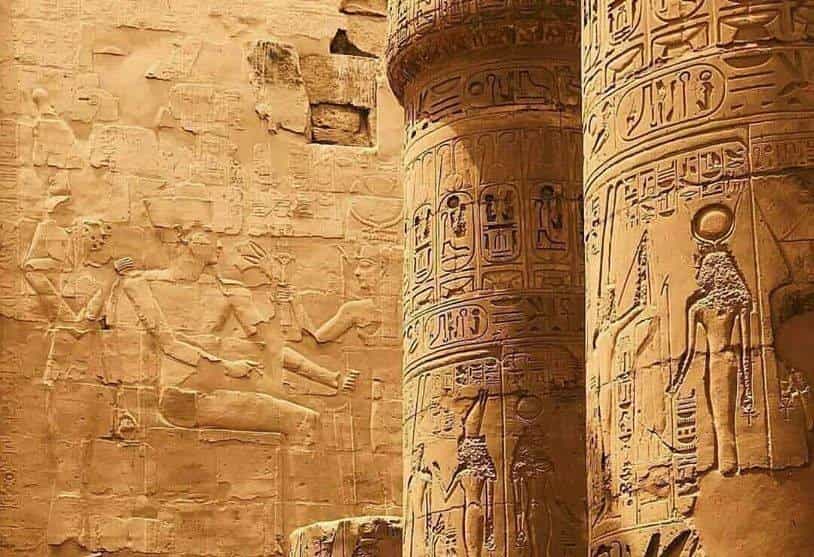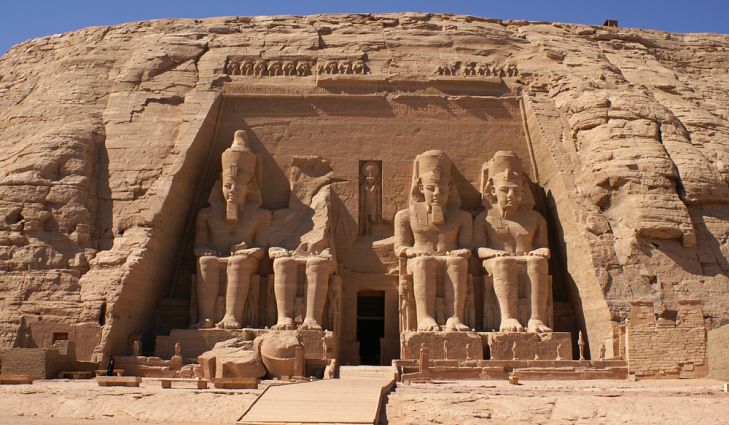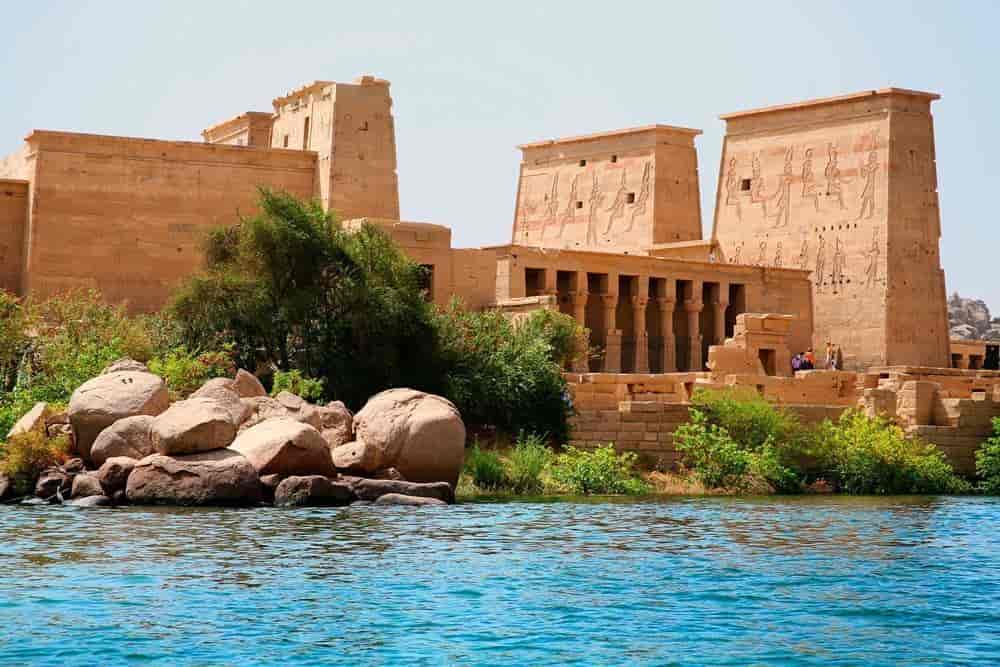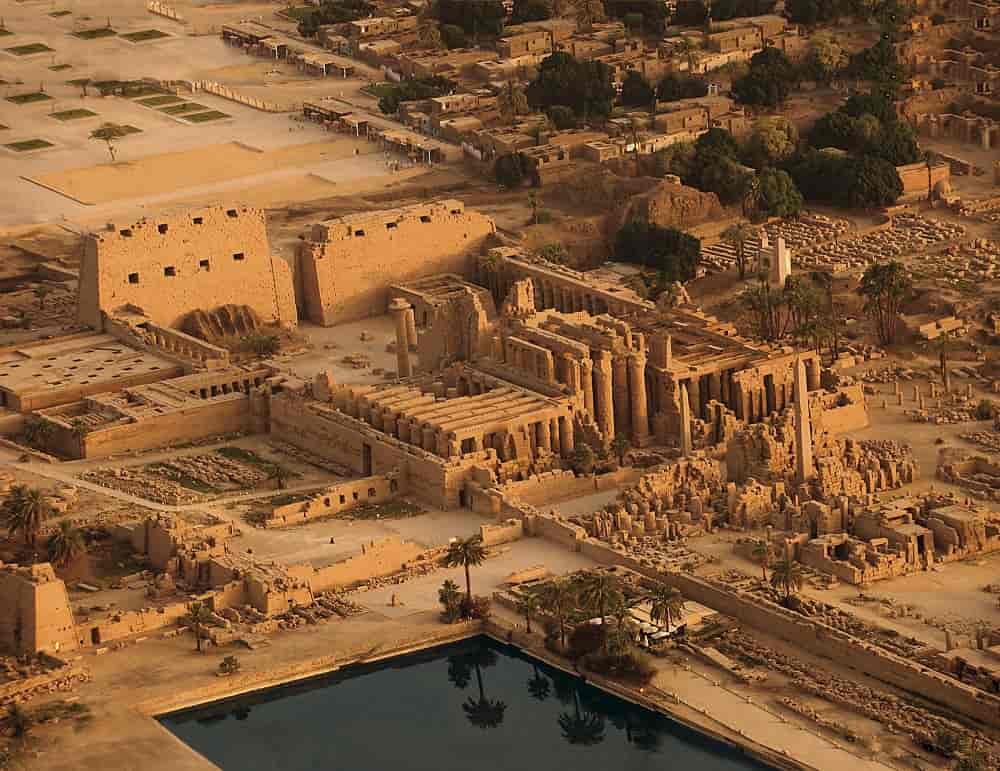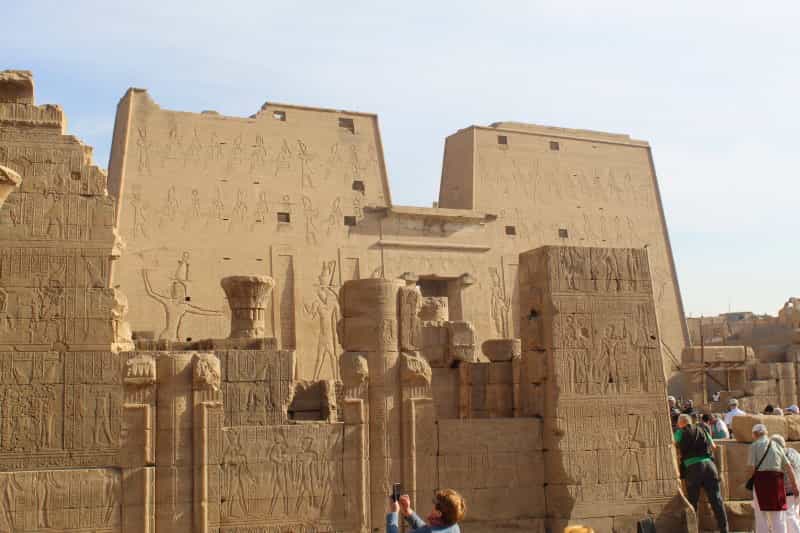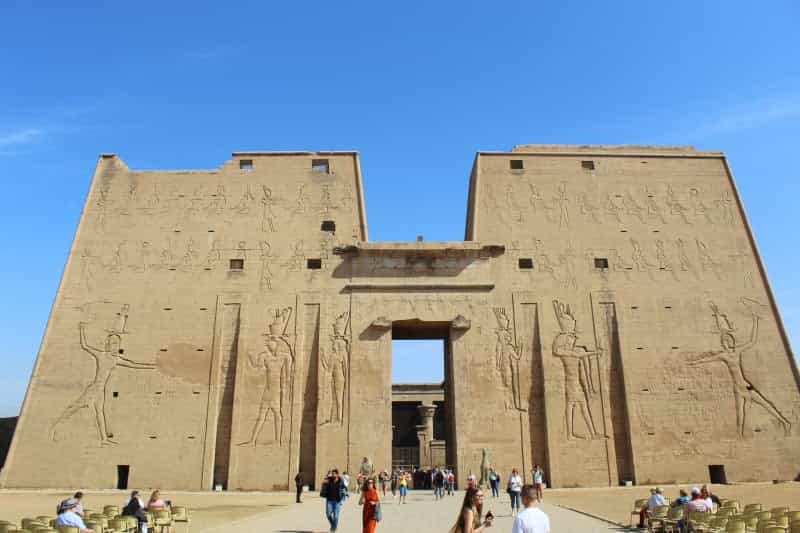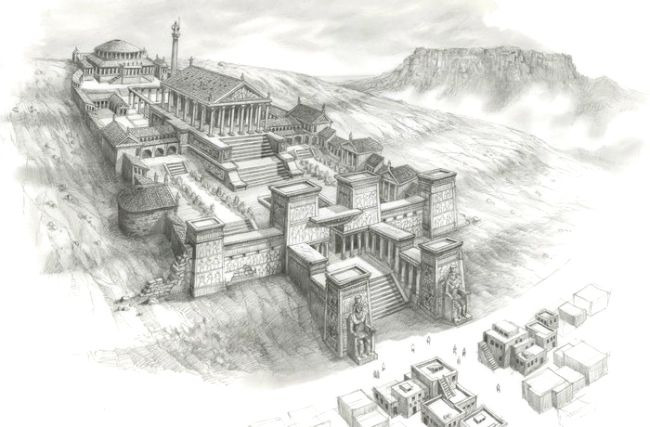Few ancient civilizations put as much effort into building temples as the ancient Egyptians.
We currently have evidence of hundreds of constructions with various functions, whether it was the religious worship of local or national gods serving as an administrative center.
Thanks to these monuments, we are able to understand numerous elements of Egyptian culture throughout the three thousand years that it lasted on the banks of the Nile.
Not all Egyptian temples had the same importance, some of them being monumental constructions and others small enclosures. Others stood out only during specific moments of Egyptian history.
For this reason, we will make a summary of the characteristics of the most important and famous Egyptian temples that existed.
The first Egyptian temples: Memphis and Heliopolis
Although very few remains of what they once were have been received, the Egyptian temples in these two cities were true religious sites during the early stages of the Nile civilization.
Memphis was the capital during the Old Kingdom (2686-2125 BC approx.), and it was where one of the creator gods of the universe, Ptah, was worshiped.
His temple was one of the religious centers for almost all Egyptian history, hosting the cult of Ptah himself and the bull god Apis.
This acquired great popularity in the Ptolemaic period (332-30 BC approx.), even combining Osiris to form Serapis, the most important god of this time.
It’s remains are scarce and some are already under modern construction, making it difficult to excavate and study them better.
On the other hand, there is the solar temple of Heliopolis a very short distance away. Like the previous one, very few remains of it have come down to us.
We highlight the obelisks of Sesostris I (1956-1911 BC approx.) and Ramses II (1279-1213 BC approx.), which are currently in Rome under the name of Obelisk Flaminio.
This Egyptian temple was the most important during the Old Kingdom, as this City was the religious capital of that time.
In fact, their priests reached very high levels of power, even directly influencing the Fifth Dynasty (2494-2345 BC approx.).
The most important Egyptian temples: Karnak and Luxor
If we travel to Thebes, the Egyptian capital during the New Kingdom (1550-1069 BC approx.), we find two monumental Egyptian temples, Karnak and Luxor, connected by a long avenue decorated with sphinxes.
The first of them is the largest religious complex built in Ancient Egypt. It was started by Senusret I when Thebes was still a city of regional importance and was constantly expanded by almost all the pharaohs who ruled the two lands.
Within the Karnak complex, the Great Temple of Amun stands out and is considered the most important in the entire country.
It was a true divine city that offers us some of the most beautiful places in all of Egypt, such as the hypostyle hall from the reign of Seti I (1294-1279 BC approx.).
This great construction was joined by the temples of Ramses III, Khonsu, Mut, and the sacred lake, among others.
Complementary to this, we find the temple of Luxor, possibly beginning at the same time as Karnak. However, archeology has placed its oldest remains in the reign of Hatshepsut (1473-1458 BC approx.).
Even so, its main structure was built by Amenhotep III (1390-1352 BC approx.) and enlarged by Ramses II after Akhenaten (1352-1336 BC approx.) stopped its construction.
From this majestic enclosure, we can highlight the peristyle courtyard of Amenhotep III, with sixty-four slender columns surrounding it.
More than twenty pharaonic sculptures were discovered of great value that are now in the Luxor Museum. The importance of this temple had to be very great since characters like Alexander the Great left their mark on it.
The most famous Egyptian temple: Abu Simbel
One of the great tourist attractions in Egypt is, without a doubt, the temple of Abu Simbel. Built by Ramses II, it was intended to show his power, prestige, and dominance over Nubia, a region to the south of great importance to the Egyptian economy.
It is very probable that the construction of this extraordinary complex, excavated in the rock, began in the year 1274 BC, the same year in which the most crucial military clash of his reign, the Battle of Kadesh, took place.
In fact, this confrontation was recorded in the bas-reliefs of the monument with images of the king in full combat.
Abu Simbel is divided into two Egyptian temples, the largest and the smallest, dedicated to the pharaoh and his wife, Nefertari.
The largest stands out of the four colossi that flank the entrance, the baboons at the top, and the astronomical alignment with the sanctum sanctorum, illuminated on October 20th and February 22nd by sunlight.
The rediscovery of this monument in the nineteenth century caused a wave of visits by people from the West to photograph and romantically contemplate its ruins, almost entirely covered by sand.
The last Egyptian temples: Edfu and Philae
During the Ptolemaic Era (332-30 BC), the Egyptian culture remained in force, and as such, important Egyptian temples continued to be built, such as those of Edfu and Philae.
In the case of Edfu, it was built by Ptolemy III (246-221 BC) and completed by Ptolemy XII (80-51 BC) on top of an old temple from the New Kingdom.
It was consecrated to the god Horus, one of the most significant of Ancient Egypt, and stands out for its mythological scenes in which we can see the confrontation against the god Seth, a grand myth of the Egyptian religion.
The Philae temple’s construction started around 690-664 BC when Taharqa ruled. However, like Edfu, its main structure was raised throughout the reign of the Ptolemies.
It was sacred to the goddess Isis, mother of Horus and wife of Osiris, and its importance was such that even some Roman emperors, like Trajan (98-117 AD), reformed it.
The Philae temple has hosted two elements related to the disappearance of the Egyptian religion and culture and pagan in general.
Its walls are engraved with what are considered to be the last hieroglyphs carved, dated August 24th, 394 AD.
Likewise, this temple was the last vestige of pagan religions in the territories of the Roman Empire and maintained its cult until the year 550 AD, when Justinian (518-565) decided to close it. From that moment, the Egyptian religion became part of history.
Sources:
Alvaro Comes Cervera, historiaeweb
QUESADA, JJU (2012): Pharaonic Egypt: politics, economy and society (Vol. 4). University of Salamanca.
RUIZ-DOMENECQ, JE (2013): The Egyptian Empire.
SCHULZ, R., & SEIDEL, M. (1997): Egypt: The World of the Pharaohs. Könemann Verlagsgesellschaft.
SHAW, I. (2010): History of ancient Egypt. Madrid: The Sphere of Books.
WILKINSON, R.H. (2000): The complete temples of ancient Egypt. Thames & Hudson.
